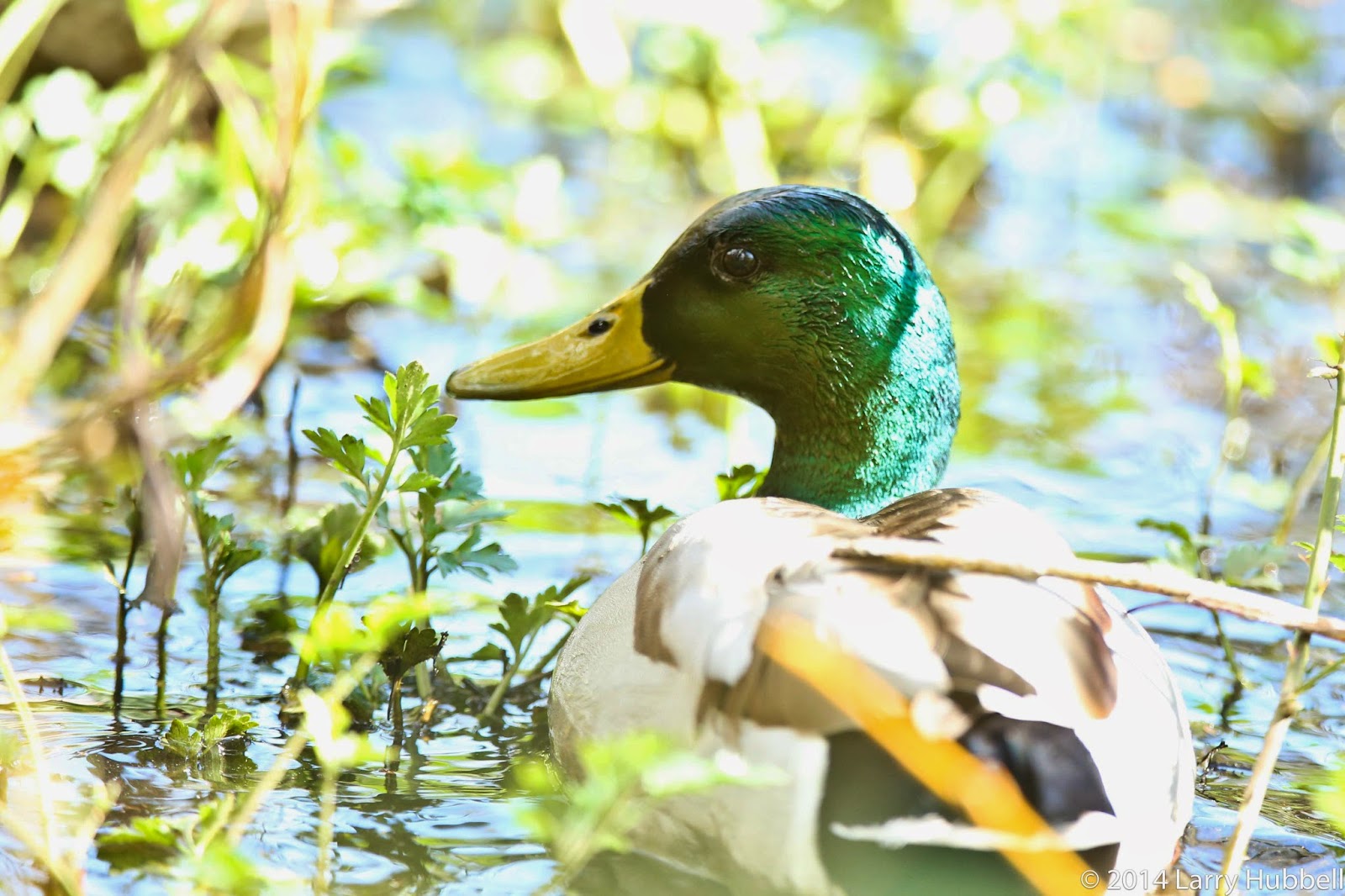It also sounds like there is a fair amount of variation in their coloring. In some areas the crests are blue instead of black and sometimes the markings above the beak are less obvious, this maybe due to the angle of the light. Birdweb says they maintain long-term, monogamous relationships with their mates.
It was amazing to watch how much nesting material this bird could hold.
As you can see, this jay got a full load before heading back to the nesting tree. But the most surprising thing about this encounter was the white color around the feet. Particularly in the first three photos it looks like this bird is wearing bobby socks.
I have no clue what is happening to this bird's legs. It reminds me of calcium build up that might happen from water running over a stone. When I google Steller's Jays, and even birds in general, I cannot find any similar examples. If you can shed light on this subject I would love to hear from you.
In the Arboretum there were other signs of spring, in addition to nest building, there are…
…Magnolia blossoms...
…ferns preparing to un-fiddle their heads…
…Oregon Grape getting some color….
…the flowering of this beautiful bush….
…it is unknown to me, but it was worth a close up.
At Duck Bay there were high speed landings and…
…a male Bufflehead….
…sunbathing….
….preening….
…grooming…
…and just enjoying Spring.
At dawn, Elvis and his mate headed north as they left Interlaken Park. (The previous day they headed to the southeast. If they have a pattern it is not yet obvious.) It was late morning before I caught up to them on Foster Island. One bird circled as far east as Beaver Lodge Sanctuary before turning back.
The Sanctuary is just north of Eva and Albert's Broadmoor nest where Eva has been spending a lot of time for the last couple of weeks. This is good news for those of us looking forward to eaglets in early June. By the way, she is not always obvious and often all that can be seen is just a spot of white from the top of her head.
Elvis and his mate spent 10 minutes mostly hidden, high in the dead cottonwoods just south of the southwest bridge to Foster Island. This was particularly delightful for a busload of young grade school children who yelled and pointed excitedly when for a brief moment the birds both landed mid-way down the trunk of the same tree. The woodpeckers looked like they were headed back towards Interlaken around lunch time.
Near the mouth of Arboretum Creek Skunk Cabbage were seeking the light and…
….and the bark for food…
…while defying gravity in almost every way possible.
Nearby a male Mallard allowed this parting shot.
Have a great day on Union Bay…where nature lives in the city!
Larry























The mystery plant is wild currant. They also come in white.
ReplyDeleteThank you! It does look like this illustration which came with an interesting story, especially since I graduated from David Douglas High School in Seattle.
ReplyDeletehttp://www.aislinnadams.com/2013/02/pacific-northwest-native-red-flowering-currant-ribes-sanguineum-a-favorite-on-both-sides-of-the-atlantic/
Hi Larry I found a crow with similar feet in West Seattle. See my blog called Crow feet what is wrong. Not sure if it is like avian pox or stepped in human gunk. I saw the same crow several months later a few blocks over with the same big flock. Feet still gunky. Mystery for sure. R
ReplyDeleteSadly, there seems to be consistent agreement that Scaly Leg Mites are the most likely culprit. You can read more here: http://www.the-chicken-chick.com/2013/03/scaly-leg-mites-in-chickens.html
ReplyDeleteI am hearing that these mites are generally not found in wild birds so I would guess the birds we have seen may have contracted the mites while feeding around chickens.
I live in Bellevue and have many Steller's Jays around my house, some with varying degrees of this. One frequent visitor I call 'Greylegs', now I know why. Hope he does okay.
ReplyDeleteI do not know of anyway to help wild birds who have contracted this. It sounds like the best we can do is try to keep them away from chickens and other birds. For instance if the jay is coming to a feeder it might be best to clean the feeder and then use a feed that does not attract the jays so they are not spreading the mites to other birds. This also makes me have second thoughts about bird feeders.
ReplyDelete